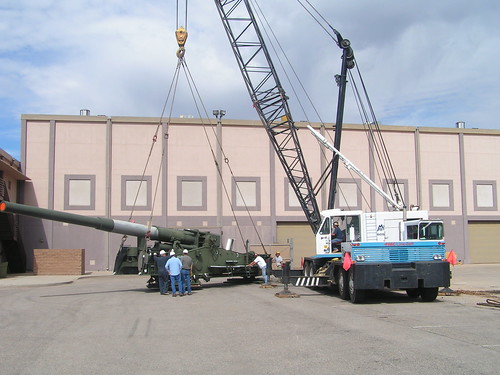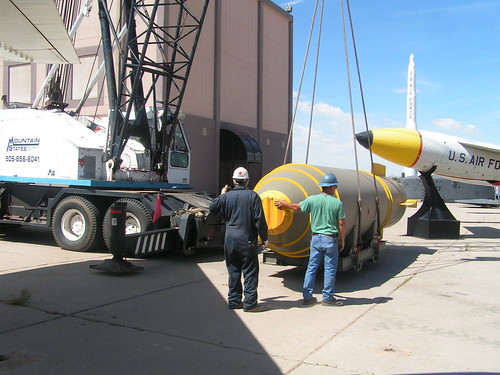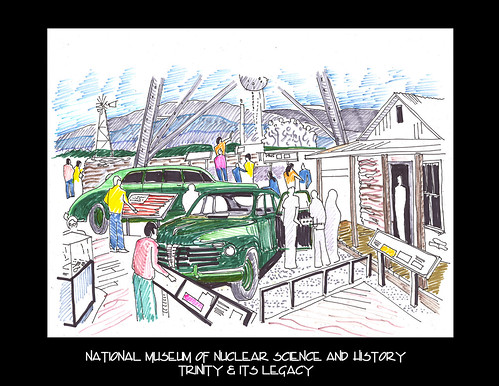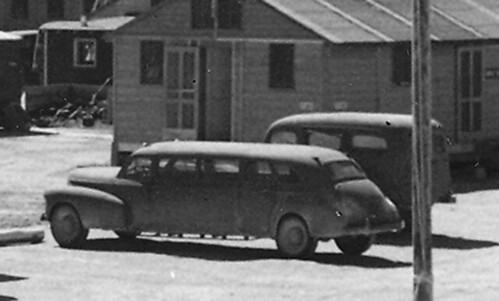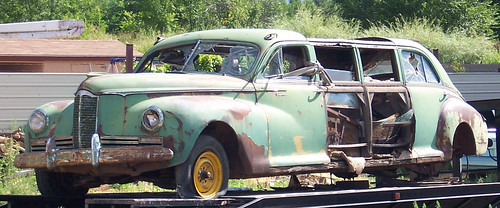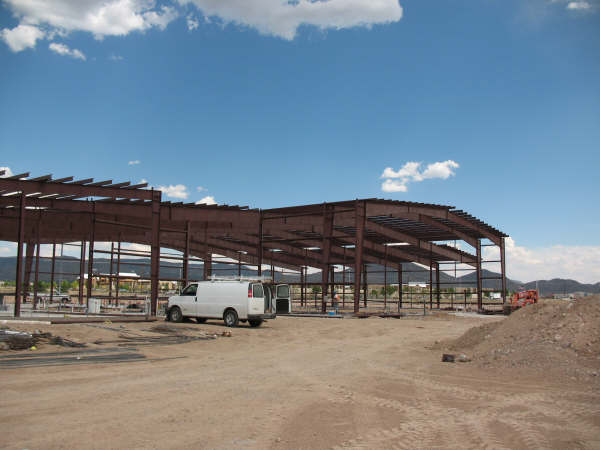Over 150 new photos have been uploaded to our flickr page, with many more to come!
However, the most moving day thus far was October 31, 2008. It was a momentous day. One of those days where you were proud to say "I was there."
It's one of those situations that I really think you had to be there to experience, but there were moments where we had serious chills and tears our eyes. Those of us in attendance got to be a part of both National and New Mexican history.
What happened? The National Atomic Museum's B-52 bomber, that has been sitting in the same spot at the old museum location on base for THIRTY FIVE YEARS, had one of the final phases of deconstruction done. The wings were removed from the fuselage (the body).

Three of the largest cranes in New Mexico were on hand to hold up the ends of the wings and the box in the center that holds them together. The staff from World Wide Aircraft recovery worked tirelessy all morning to prep to remove the FOUR BOLTS (each the size of an average adult forearm) that held the wings to the plane. Then, as if the many hours that passed hadn't yet, the wings and the body were no longer one. The fuselage was towed out from underneath the wings, and the wings then lowered in preparation to be seperated.
Sometime in December or January, Worldwide Aircraft Recovery will be back to tow the B-52 to its new home at our new site. Not only will this be momentous because of the new museum, but also because this plane will be towed there ON ITS OWN WHEELS. All you history, military, and science buffs out there - get your cameras ready! This is going to be some kind of an event!
While we can't have people coming up onto the new museum property, you CAN park yourselves in the parking lot of the Costco accross the street and take as many photos as you'd like! Details and information to come!
